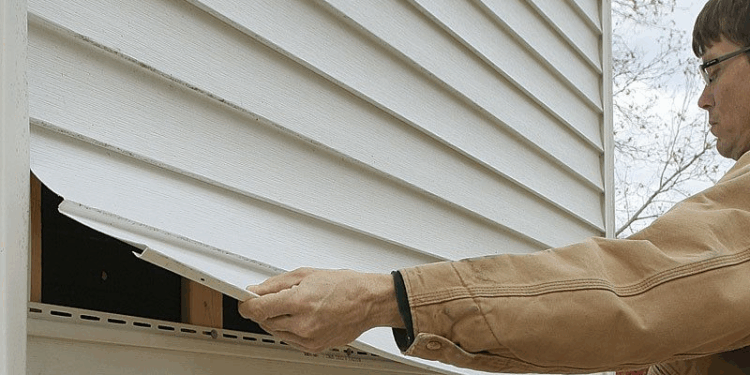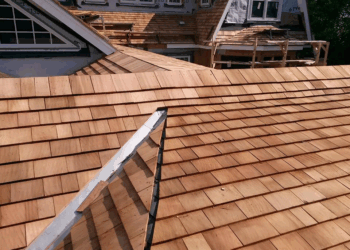
Exploring the costs involved in replacing vinyl siding can be a daunting task for homeowners. From material quality to labor expenses, various factors come into play. This guide aims to shed light on the key aspects of vinyl siding replacement costs, providing valuable insights for those considering this home improvement project.
Factors influencing the cost of replacing vinyl siding
Replacing vinyl siding can be influenced by various factors that impact the overall cost of the project. Understanding these factors is essential for budgeting and planning purposes.
Size of the project
The size of the project plays a significant role in determining the cost of replacing vinyl siding. Larger homes or buildings will require more materials and labor, resulting in higher overall costs. Additionally, complex designs or structures may also increase the cost due to the additional time and effort needed for installation.
Material quality
The quality of the materials used for vinyl siding replacement can impact the cost. Higher quality materials, such as premium vinyl options or specialized finishes, will generally come at a higher price point. However, investing in quality materials can lead to better durability and longevity, potentially saving money in the long run on repairs and maintenance.
Professional vs. DIY
Deciding whether to hire professionals or opt for a DIY approach can also affect the cost of replacing vinyl siding. While tackling the project yourself may seem cost-effective initially, mistakes or improper installation can lead to additional expenses down the line.
Hiring experienced professionals ensures proper installation and can potentially save money by avoiding costly errors.
Average cost breakdown for vinyl siding replacement
When it comes to replacing vinyl siding, it is essential to understand the breakdown of costs involved. Factors such as materials, labor, and additional services play a significant role in determining the overall expenses of the project.
Materials Cost Breakdown
- Vinyl Siding:Vinyl siding is one of the most cost-effective options, with an average cost of $2 to $7 per square foot. This affordability makes it a popular choice among homeowners.
- Fiber Cement:Fiber cement siding is a more durable option compared to vinyl, with an average cost ranging from $5 to $12 per square foot. While it may be more expensive, its longevity and low maintenance requirements make it a worthwhile investment.
- Engineered Wood:Engineered wood siding falls in between vinyl and fiber cement in terms of cost, averaging around $4 to $9 per square foot. It offers a natural wood look without the high price tag of traditional wood siding.
Labor Costs
- Installation:Labor costs for vinyl siding installation typically range from $1 to $3 per square foot. The complexity of the project, such as the size of the house and any additional features, can impact the final labor costs.
- Removal:If old siding needs to be removed before installing new vinyl siding, this process can add an additional $1 to $2 per square foot to the labor costs.
Additional Services
- Insulation:Adding insulation during the siding replacement process can increase energy efficiency but also adds to the overall cost. Insulation costs can vary but generally range from $1 to $2 per square foot.
- Trim Replacement:Replacing trim around windows, doors, and corners is another additional service that can enhance the aesthetics of the home. Trim replacement costs typically range from $1 to $3 per linear foot.
Tips for reducing the cost of replacing vinyl siding
When it comes to replacing vinyl siding, homeowners can take several steps to reduce costs without compromising quality or durability. From scheduling replacements strategically to negotiating with contractors, here are some cost-saving tips to consider:
Schedule replacements during off-peak seasons
Scheduling the replacement of vinyl siding during off-peak seasons can help reduce costs significantly. Contractors are typically less busy during these times, leading to potential discounts or promotions to attract customers. Additionally, off-peak seasons may result in quicker completion times due to fewer projects in their queue.
Negotiate with contractors to lower labor costs
Don’t be afraid to negotiate with contractors to lower labor costs. Obtain quotes from multiple contractors and compare their pricing and services. Ask if there are any discounts available for bundling services or if they can match a competitor’s price.
Being open to negotiation can help you secure a better deal for your vinyl siding replacement project.
Proper maintenance for extended lifespan
One of the best ways to reduce long-term replacement costs for vinyl siding is through proper maintenance. Regularly inspecting and cleaning the siding, addressing any repairs promptly, and ensuring proper ventilation can help extend the lifespan of your new vinyl siding.
By taking care of your siding, you can avoid premature replacement and save money in the long run.
Environmental impact of vinyl siding replacement
Replacing vinyl siding can have significant environmental implications, as it involves the disposal of the old siding and the production of new materials. It is important to consider the eco-friendliness of different siding materials as alternatives to vinyl and to explore recycling options for old vinyl siding to reduce waste.
Choosing sustainable vinyl siding products can also help minimize the environmental impact of the replacement process.
Comparing eco-friendliness of siding materials
- Wood siding: Considered more environmentally friendly as it is a renewable resource, but requires maintenance and may contribute to deforestation.
- Fiber cement siding: Durable and low maintenance, but production process emits carbon dioxide and other pollutants.
- Metal siding: Recyclable and long-lasting, but production involves mining and energy-intensive processes.
- Recycled vinyl siding: Using recycled vinyl can reduce waste and energy consumption, but availability may be limited.
Recycling options for old vinyl siding
- Contact local recycling facilities: Some facilities accept vinyl siding for recycling, reducing landfill waste.
- Reuse or repurpose: Old vinyl siding can be repurposed for other projects or donated for reuse to minimize environmental impact.
Tips for choosing sustainable vinyl siding
- Look for products with high recycled content: Choosing vinyl siding made from recycled materials can help reduce environmental impact.
- Opt for energy-efficient options: Insulated vinyl siding can improve energy efficiency of the home, reducing overall environmental footprint.
- Consider longevity and maintenance: Choosing durable vinyl siding that requires less frequent replacement can be more sustainable in the long run.
Wrap-Up
In conclusion, understanding the factors influencing vinyl siding replacement costs, exploring average cost breakdowns, and learning tips to reduce expenses can empower homeowners to make informed decisions. By considering the environmental impact and sustainable options, individuals can embark on this renovation journey with confidence and clarity.
Detailed FAQs
What factors can influence the cost of replacing vinyl siding?
Factors like material quality, project size, and professional labor costs can impact the overall cost of vinyl siding replacement.
How does the cost vary between different siding materials like vinyl, fiber cement, and engineered wood?
The cost differences are influenced by material quality, durability, and installation complexities.
Are there cost-saving tips for homeowners looking to replace vinyl siding on a budget?
Yes, scheduling replacements during off-peak seasons, negotiating labor costs, and proper maintenance can help reduce expenses.
What is the environmental impact of vinyl siding replacement?
Replacing vinyl siding can have environmental implications, but choosing sustainable materials and recycling options can minimize the impact.














